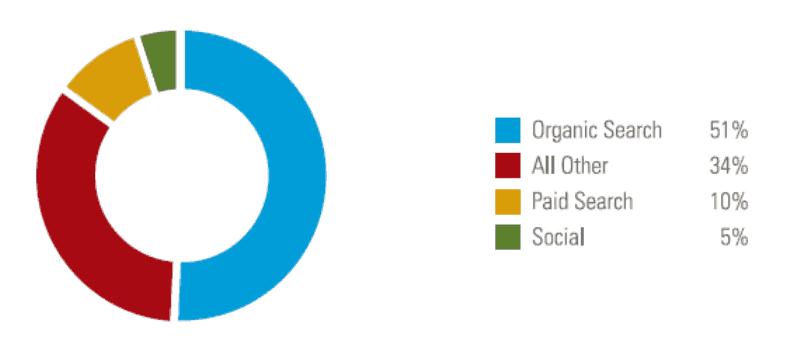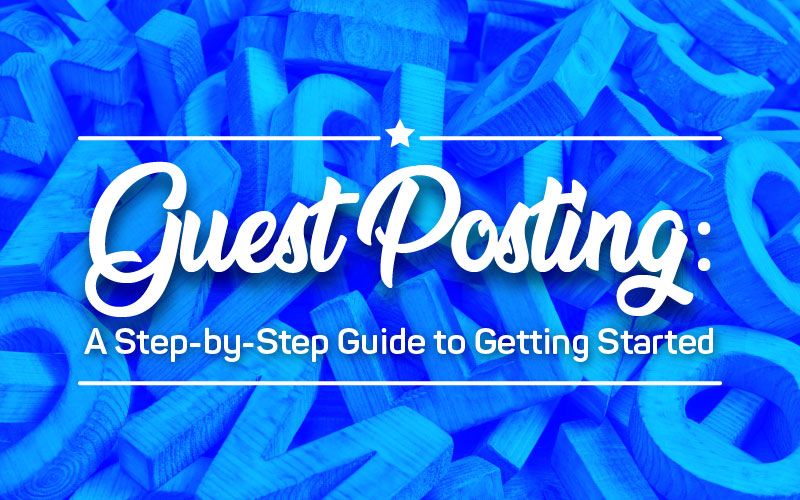Making Money From Blogging As A Beginner: All You Need To Know
Is it really possible for a beginner to make money with a blog? Can you make a living out of blogging or is it just another myth? The answer to both questions is ‘Yes’.
Blogging for money is not a theoretical concept but it’s a reality. Anyone with some basic knowledge of blogging, SEO, and a general idea on how the Internet works can start a blogging business and make money.
How Bloggers Earn Money
The purpose of this guide is to help you understand how to make money blogging by avoiding mistakes or losing valuable time on tasks that won’t contribute to your main goal. It is aimed at beginners because most beginners find it very difficult to understand how blogging can help them make money.
Hopefully, this comprehensive step-by-step guide will put you in the right direction from the very beginning, and give you a solid plan to follow that will generate results in the fastest possible way. Before getting into the details, it is important to clarify that making money from a blog is not an easy job, it’s a tricky and time-consuming process that requires a LOT of effort and hard work but it’s also one of the best and most rewarding enterprises out there.
How To Make Money With a Blog?
Let’s rewind and take it from the beginning. How do most bloggers make money online and how can you do the same? These are the 7 steps to follow to make money blogging.
- Setup your blog (Swish.ink is perfect for this)
- Publish quality content
- Get organic traffic to your blog
- Build a community around your brand
- Sell ads
- Advertise and sell your own products or services
- Make money through affiliate marketing
Although these processes sound simple, some of them are tricky and you will need to be equipped with the proper knowledge, the right tools, and a lot of patience.
Step 1: Setup your own blog
This is perhaps the easiest step. It’s so easy these days to register a domain name and set up a blog. All you need is a bit of help and pointers in the right direction. Swish.ink offers its users the opportunity to set up their blogs without having to do any coding. You just focus on putting out content while the service takes care of the technicals. Smooth and easy.
Mistakes to avoid when setting up your own blog
As a beginner in blogging, it’s normal to make mistakes. That’s perfectly OK provided that you learn from your mistakes and not repeat them. When it comes to starting a blog, have these tips in mind.
Keep your focus on your main goal – make money online.
Your goal is to reach a point where you will start making money from your blog, you should not forget that.
This is worth mentioning because a common mistake beginners make is spending too much time and effort in designing the ‘perfect blog’, forgetting that at the early stages (when there is no traffic coming in), nobody cares about your website’s design, and that includes Google.
This is not to say that website design is not important, it is, but not at the early stages. Your primary goal at this step is to have a blog running and start creating content that will get you traffic. There is so much work involved in getting traffic (and potential customers), and you should devote your energy to those tasks from the very beginning.
Keep it simple
If you are starting out now, try to keep everything as simple as possible. Don’t overcomplicate things because you will get lost in the process.
You have a lot to learn and as you go along, you will change your mind about many things, so save your time and energy for the more complicated tasks.

Photo Credit: backlinko.com
Step 2: Start publishing great content
So, you have a website up and running, that’s great!
Now it’s time to get to one of the most difficult and challenging tasks of blogging, which is no other than creating the actual content for your blog. Having said that, it is important to understand from the beginning the importance of content for your blog’s success.
Great (good, superb, or fantastic – you choose) content, will get you traffic (we will see below how), credibility, and make you money (in different ways).
So, what is great content?
Great blog content is not necessarily text, it can be images, videos, infographics, or even audio. BUT, for the purpose of achieving high rankings on Google (and other search engines), your content should be primarily text.
As mentioned above, at the beginning keep it simple. Later on, for the best results, you can combine text with other forms to make your content more interesting.
Great content has the following characteristics:
- It’s unique for your website (it’s not an exact copy of an already published post)
- It’s free of spelling and grammar mistakes
- It’s meaningful
- It’s insightful
- It’s unbiased
- It’s something that helps people do/understand/learn something
- It’s easy to read
Don’t worry if the above list doesn’t make a lot of sense for now, as you become more experienced, you will understand it better.
Characteristics of Quality Content
Let’s see how you can practically create good content for your website.
Choose a topic that you enjoy reading/researching/writing
When you start writing content for your blog, you should be in a position to provide content that meets the criteria of good content (as explained above). If you are not passionate about the topic, this process will be very difficult and you will give up before you even begin. A money-making blog needs a lot of content and you need to come up with a lot of ideas and topics to cover on a weekly basis (if not daily), so have this in mind when choosing your niche.
Choose a topic with a decent audience
It’s not enough to be passionate about a topic, others should be too. Remember that in order to make money from your blog, you will need people to buy your products or advertisers to pay money for your ad space. If your selected topic does not have a decent audience, none of the above will happen. The easiest way to do a preliminary search as to the potential of your niche is to open Google and search for phrases (keywords), that come in mind. Look for the number of results and types of websites that appear in the first pages of Google.
Don’t go too broad, make it specific
While you do need a decent audience for your chosen topic, don’t go too broad because chances are that there are already thousands of websites about the same subject.
Popular topics have a bigger audience but they are also very competitive. If you are starting out now as a solo blogger, it would be easier to compete with other bloggers rather than online businesses that have teams of writers and SEOs behind them.
Let me give you an example to make this easier to understand.
Let’s say that you’re passionate about ‘fitness’ and ‘healthy living’. If you do a search on Google for ‘weight loss’ or ‘dieting’, you will get thousands of results, many of them from online magazines or websites that have been established for years, loaded with thousands of content pages.
It’s impossible for a new website to compete with these and get Google traffic for such broad terms. What you can do instead is to narrow down your topic and go after a specific niche that it’s still related to your passion but with less competition. An example would be “healthy living advice for kids”.
It’s a topic with a lot of interest, mainly from parents who want to learn how to provide a healthy lifestyle for their kids, and they also hold the money to buy a product (maybe an ebook) to help them do so. This process of finding out what to write in your blog is called keyword research. Read our blog about it here.
It’s a process that you need to master from the very beginning and I strongly suggest you take some time and read the following articles:
Step 3: Build organic traffic to your blog
The next step is to start building organic traffic to your blog, and this is what will be discussed in this section.
What is organic traffic?
 Organic Traffic Statistics
Organic Traffic Statistics
To make money from your blog, you need organic traffic and not just traffic in general. Organic traffic is generated from search engines (mostly Google).
What makes organic traffic more valuable than any other source of traffic, is the ‘user intent’. A user that types a query in Google’s search box, has a clear intent. He or she is either looking for an answer to a question, wants to learn something, to find information, or to buy a product.
Their intent is expressed through the actual search terms they use in the search query. For example, a user searching for “how to do an SEO audit of my website”, it is clear that he is looking for a step by step guide on how to perform an SEO audit.
It is very specific and in order to be eligible to rank for that term (or related), you need to provide Google with a thorough guide on how to perform a manual audit. When you do this properly, your blog posts will eventually rank high on Google and you will start getting targeted organic traffic to your blog.
Step 4: Build a community around your brand
Once you have a blog with great content and the traffic starts to flow in, your next step is to build a community around your brand.
Before making any sales (conversions), you first need to gain the user’s trust and this is achieved through community building. Notice the use of the term ‘brand’ and not just blog and this is done on purpose. At this stage, you need to stop thinking about your blog as a hobby but you need to change your mindset and approach it like you would approach a ‘real’ business.
We all know that branding is a very important aspect of the success of any business and your blog is not an exception to this rule. There are many things you can do related to branding (like having a distinct logo, unique slogan, etc.), and community building is one of them.
What is community building for a blog?
In simple terms, what you are trying to do is to create a community of people that will follow your blog, interact with your content, and buy your products or services.
The most common ways to do this is through:
Email marketing
People that subscribe to your email list (aka newsletter), are a valuable asset to your blog. You can use your email list to inform your community when new content is available on your blog, to ask for their feedback, and to sell them products or services.
This will not happen from day one, you first need to gain their trust by providing value through your emails but at the end of the day, it’s one of the most efficient methods to create a community around your blog.
Social Media networking
Some people don’t like to receive emails, they prefer to use social networks to read their news, communicate with their friends, and generally spend a lot of their time online. You need to ensure that you have a social presence in the same channels as your potential followers.
There are many social media networks available that you can use but since you are at the beginning of setting up and establishing your blog’s brand, it’s better to concentrate on those channels that are proven to be more effective than others (when it comes to building followers), and these are Facebook and Twitter.
Start by building your fan base on Facebook and also spend 10-15 minutes per day on Twitter.
Remember that your goal is to connect with people that can become potential followers and customers of your blog and not just with anyone that has a social presence. Do some profiling and choose your target audience wisely.
Web push notifications
This is another way to connect with your community. People who register for push notifications are notified every time a new post is published and whenever you want to send them a new message.
Replying to comments
Last but not least, you should not forget about blog commenting. This is not referring to comments you can write on other blogs but to reply to comments other people post on your blog. If someone writes a comment to one of your articles, they expect to get a reply back, and ignoring them is not good when trying to build a community.
Step 5: Start making money by selling ads
Did you notice how many things you need to do to get to the money-making part?
Although this blog post is about making money from your blog, almost ¾ of the content is related to activities that come before that and this is how blogging for money works in real life.
As a reminder, it is necessary to understand that you will not make money from your blog if:
- You don’t have enough organic traffic
- You don’t have a decent email list
- You don’t have a community of loyal followers.
- You don’t have content that converts
Assuming that you have successfully completed the above tasks, let’s see how you can make money online and reward yourself for the hard work.
Selling Ad Space: Google AdSense
Although there are alternatives, Google Adsense it’s still one of the best ways to make money online. A few things you should know about making money with AdSense:
Easy and reliable
Adsense is very easy to use and reliable. All you need is a blog with great content and lots of traffic. You add AdSense to your blog and when people click on one of your ads you get the 68% of the money paid by the advertiser (the remaining 32% goes to Google for providing this service).
It’s reliable because you know that Google will pay you on time and will do anything they can to protect the system from fraud and spam. You can choose what type of ads to show, how often to show them, how the ads will look, and many other things.
How much money can you make from AdSense?
The amount of money you can make from Adsense depends on three things:
- Your organic traffic levels
- Placement of your ads
- The number of available advertisers for your niche.
Let us quickly examine these factors:
Obviously, the more traffic you have, the more money you can make from Adsense. It’s as simple as that.
To make money from Adsense, you need people to click on your ads and the position of your ads on the page is a very important factor.
Although the best way is to test different ad placements and find out which placements work better for you when you put Adsense in your main content (as opposed to the sidebar and footer), you can expect higher click through rates (CTR) and this means more earnings.
Ads that are above the fold also perform better.
Adsense is a keyword-based auction type system. When a user is searching on Google and then visits a website that has AdSense ads, it will try and show to the user ads that are relevant to the search query. If there is a lot of competition i.e. many related ads, then this increases the money the advertiser will pay and the money you will earn.
Can you advertise your blog or products through AdSense?
Yes, you can through Google Adwords. AdWords is the system used by advertisers to run ads that are displayed on Google search and Adsense websites. Have in mind though that you cannot use Adwords and drive PPC traffic to a landing page that has Adsense on it. In the past, this was a method that made some people a lot of money but not anymore.
When is it best TO use Adsense?
- Use AdSense on websites that cover a lot of topics (news portals, magazines, newspapers, forums, etc).
- Use Adsense on websites in the healthy living niche (fitness blogs, weight loss, etc).
- Use AdSense on websites that have lots of page views.
When is it best NOT to use Adsense?
- Don’t use Adsense when you can make and sell your own products or services.
- Don’t use Adsense when you can make money through affiliate marketing.
Step 6: Make money by selling your own products or services
Think about it this way: When you sell ad space on your blog what happens? You only get a portion of the money since 30% goes to the middle man (advertising company) and the advertiser is making a profit from your content and hard work. To minimize the money loss, you should consider creating and selling your own products or services.
Of course, this is not as easy as it sounds. It requires a lot of effort and hard work to create products that other people will be willing to pay money for it BUT it’s the best way to build a long-lasting online business.
Having your own products will maximize your profit and you know that every effort you make to get more traffic will make you more sales. The easiest type of products to create and sell online through your blog are ebooks and online courses. Before spending any time and possibly money to create your own product, you should do some homework.
To be more specific, you need to answer these 4 questions:
- What type of product to create?
- Who can potentially buy your product?
- How much to sell it?
- How to test your product idea before actually making the product?
To answer the first three questions, you need to do your research and find out what is already available in the market, who sells it and how much they sell it.
Step 7: Make money through affiliate marketing
Last but not least, another way to make money from your blog is by selling other people’s products (digital or physical) for a commission.
This is generally known as affiliate marketing. Here is an overview of the process.
- You find which products you want to promote
- You enroll in their affiliate marketing program and you get a unique link and banners to use
- You add the links/banners in your blog
- When someone clicks on the links, they are redirected to the website of the provider
- When they make a purchase, you get the agreed commission
It sounds good, right?`
Some things to know before getting into affiliate marketing:
-
Don’t promote products or services you don’t’ personally use. You don’t want to lose your user’s trust. Only promote products that you know from personal experience that will help your readers. Google does not like websites or web pages that their sole purpose is to make money from affiliate links. Your website should provide real value to the user, without being too promotional.
-
Don’t overdo it. It’s ok to suggest products in your blog’s content but not all the time. Good affiliate marketers don’t promote products all the time. They first provide value to their readers and then suggest products.
Conclusion
Blogging for money is not a theoretical concept. Thousands of bloggers are making money through their blogs either by selling ad space, their own products/services, or through affiliate marketing.
All these successful bloggers have some things in common:
- They are having blogs with great content.
- They have managed to build communities around their blogs.
- They use more than one way to make money. They have their own products but they also make money from affiliate marketing and selling ad space.
- They have been blogging for years and it took them a number of years to get to the point of making a living from their blogs.
Subscribe to our newsletter here.

